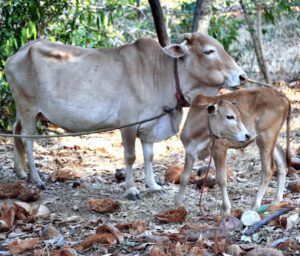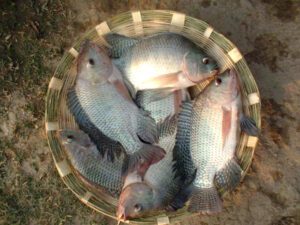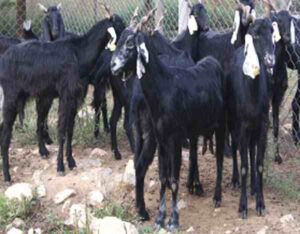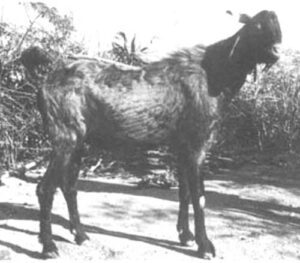The Umblachery cattle is a draft breed of the zebu type, used mainly for agricultural work. It is an indigenous breed of domestic cattle in India.
And the breed is native to the coastal plains of Nagapattinam and Tiruvarur districts in the state of Tamil Nadu in South India. Actually the male Umblachery cattle are used for agricultural purposes such as carting and ploughing.
They are very suitable for working in marshy rice fields of eastern districts of Tamilnadu. And milk from the cows is utilized for home consumption.
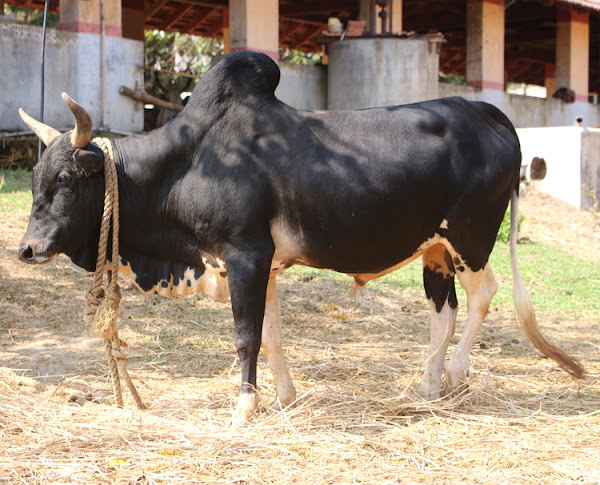
The breed is also known by some other names such as Jathi madu, Mottai madu, Southern Tanjore and Therkuthi madu. Read some more information about this cattle breed below.
Umblachery Cattle Characteristics
Umblachery cattle are zebu type animal which have similarities to the Kangayam breed. But the Umblachery is relatively smaller than the Kangayam.
They are usually grey in color with white points and back-lines. The calves are usually of different color than the mature animals. The calves are usually red or brown with white markings. Their color gradually change to grey in accordance to their age.
Forehead of the Umblachery cattle is fairly broad and always has a prominent white star. But other cattle breeds in this region lack this white start in their forehead.
Both bulls and cows have short and thick horns. Their ears are short, erect and placed horizontally. The hump is well developed in bulls, fairly developed in bullocks and small in the cows.
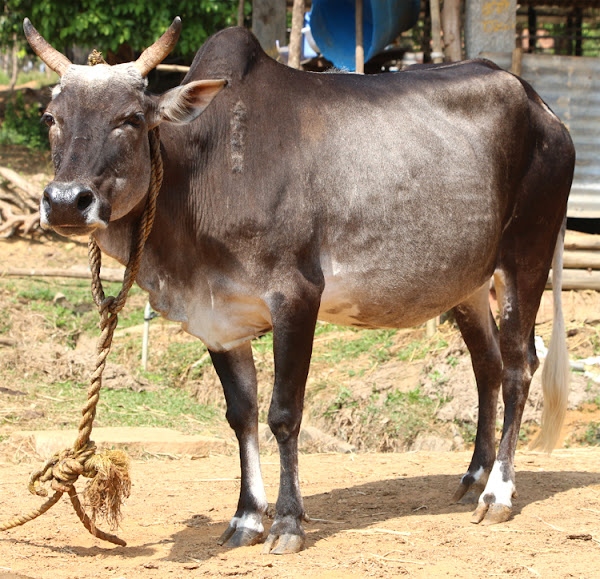
The Umblachery cattle have short but very strong legs. Udder is not well developed in the cows. Average body height at withers is 135 cm for bulls and 105 cm for the cows. photo and info from Wikipedia.
Uses
The Umblachery cattle are mainly used for agricultural work purposes. But milk from the cows is utilized for home consumption.
Special Notes
Umblachery cattle are noted for their strength and sturdiness. They are an excellent draught cattle breed of Tamilnadu. Their habitat is in the Cauvery delta region and the agriculture production in this region is very intensive especially rice production.
And these animals are very hardy and suitable for work in marshy rice fields. Milk of the Umblachery cows is of very good quality with high fat content. Review full breed profile of this breed in the following table.
| Breed Name | Umblachery |
| Other Name | Jathi madu, Mottai madu, Southern Tanjore and Therkuthi madu |
| Breed Purpose | Work |
| Special Notes | Hardy, strong |
| Breed Size | Small-medium |
| Bulls | 135 cm at withers |
| Cows | 109 cm at withers |
| Climate Tolerance | All Climates |
| Coat Color | Usually grey with white points and back-lines |
| Horned | Yes |
| Milk Yield | Poor |
| Rarity | Common |
| Country/Place of Origin | India |


